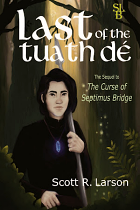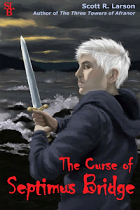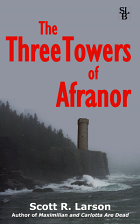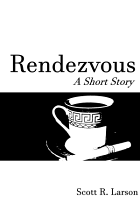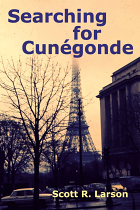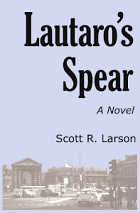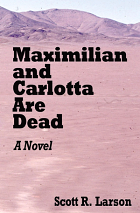Moment of Silence
When the collective obsession with Osama bin Laden began a decade ago, I was struck by an observation made by The Sunday Times. (Ironically, The Times, not unlike bin Laden, wound up going into hiding—although not in a suburban Islamabad villa but behind a pay wall.)
The article pointed out that the head of Al Qaeda was very much like a villain from a James Bond movie. He was independently wealthy, operated outside the constraints of any state, had a secret lair and devised plans for world domination to be carried out by his own private army. The only thing missing was a cat on his lap. Anyway, I’m glad that somebody finally took up my suggestion from seven years ago to make this man a star in a movie with a nice violent ending to it. Or at least I thought there was a movie. The raid on Abbottabad seems like something from a Michael Bay movie, but the more what we think we know about it changes, the more it starts to seem like a twisty paranoid thriller by Christopher Nolan.
Ten years is a long time, and times change. Of course, bin Laden is now history while, against all odds, Bond goes on, sort of. The 9/11 attacks occurred six years after Pierce Brosnan took over the role. The following year the final Brosnan 007 film, Die Another Day was released. It would be followed by a reboot that cast Daniel Craig in the role and resulted in two new movies, Casino Royale and Quantum of Solace. Doubt was cast on the future of the franchise when MGM ran into financial problems, but the word is now that the 23rd official James Bond movie will be out late next year.
With the long-awaited and much-deserved demise of OBL finally a matter of history, his organization no longer seems to me to be that of a Bond villain. His erstwhile outfit now strikes me more as a Doctor Who monster. As such, it nearly doesn’t seem a coincidence that OBL met his fate just a few hours after the broadcast of the conclusion of the opening two-parter in the new series of Doctor Who. DW underwent its own reboot in recent years, having been re-imagined for a revival in 2005—nine years after the Doctor’s previous appearance and more than 15 years after his last run on weekly television. The new series had its own mini-reboot a year ago when Steven Moffat took over from Russell T. Davies as head writer and executive producer. Under Moffat the series, which had always had its dark side, became somewhat grimmer and quite a bit creepier. Rather rely too heavily on such long-established (and all too familiar) villains as the Daleks and the Cybermen, Moffat’s first series, in which Matt Smith took over the title role from David Tenant, very gradually laid the groundwork for a whole new menace for the Doctor and his allies to battle. (Warning: spoilers for the most recent DW episodes may follow.)
The new baddies are collectively referred to as The Silence (or are they, as some web sites have it, the Silents?) and with a typical Moffatian touch, there is a do-your-head-in twist to them. Four years ago, as a writer, Moffat gave us the Weeping Angels, which were devastating creatures that froze and took the guise of statues when someone was gazing on them. (Hence, the episode’s desperate admonition not to blink.) Similarly, The Silence are everywhere and can be seen but, once you turn away and are no longer looking at them, you can’t remember them. In practice, that makes them nearly as good as invisible. This conceit made “The Impossible Astronaut” and “Day of the Moon” the kind of mind-bending experience you usually get watching a Christopher Nolan film, particularly Memento. And that would have been quite enough to keep most of us punters trying to figure out how to think about what was going on. But on top of that, Moffat also piled on more time paradox stuff that he began playing with in his standout episodes from the Davies years (the aforereferenced “Blink,” “Silence in the Library” and “Forest of the Dead”) and which kicked into high gear with the introduction of Smith’s Doctor. The source of much of the time-bending stuff is the character of River Song, played by Alex Kingston. The game here is that she and the Doctor have a long-term ongoing relationship but the two of them are experiencing it in opposite directions of time. The Doctor’s first meeting with her was her final one with him. Each subsequent time they have met, the Doctor is a bit more knowledgeable about her and she is a bit less knowledgeable about him. In a poignant moment in last week’s episode, she kisses the Doctor, much to his surprise. Sadly, she realizes that, since it is for him their first kiss, for her it will be their last kiss.
But wait, it gets even more headache-inducing. The previous episode began with a 200-year-older version of the Doctor being assassinated by a mysterious assailant in a spacesuit. This has been witnessed by his three companions who must now proceed with a younger version of the Doctor who has no knowledge of this fate that awaits him. So did this any of this (to use one of the Doctor’s own phrases) timey-wimey stuff get cleared up in the slightest? No, we only got more confusion heaped on us in the form of his friend Amy deciding she was pregnant and then that she wasn’t—in addition to a mysterious little girl (first seen in a space suit like the future Doctor’s killer’s) go on to begin regenerating like a Time Lord. Just to add fuel to the fire, at one point we see a photo of Amy and the little girl together, looking very close. All of this only feeds speculation that, of the little girl and Amy and River, two or more of them may actually be the same person but at different points in her life. It gets even more complicated if you try to bring in the Doctor’s own “daughter,” Jenny, a woman generated from the Doctor’s DNA three years ago, who was last seen showing Time Lord properties. Could she be involved in the time paradox stuff too?
It’s starting to seem like Moffat is having a joke, seeing how many ways he can tie our brains into knots. All of this is grand if he can make all the loose ends finally tie up in a satisfying manner. But if the result comes to seem to be less than sum of its parts, we will feel cheated. In his first year, he managed to resolve the issue of cracks in time that had a tendency to swallow people, although he left quite a few mysteries dangling for this year. He also has a tendency to wipe out characters, seemingly forever, and then with some timey wimey trickery bring them back with no problem. You can only do that so many times before you eliminate any necessary sense of jeopardy for the characters.
So, is The Silence the new prototype for what we should be afraid of? Clearly, in times past it was technology that we were meant to fear. Machines and robots like the Daleks and the Cyberman. Now, it is the thing just out of sight, the thing we can’t remember we saw. The thing lurking in the shadows or behind us when we aren’t looking. In the post-post-9/11 world it is not the master villain’s new secret weapon that his scientists have developed to wreak havoc on populations that we are meant to worry about. It is the lurkers in the shadows, working where we can’t see them, who have some imperceptible plan that lies in wait for us somewhere in the future.
Well, evil people who lurk, in case you needed to be reminded, sometimes we actually get one of you. Or at least I think we do.
-S.L., 5 May 2011
If you would like to respond to this commentary or to anything else on this web site, please send a message to feedback@scottsmovies.com. Messages sent to this address will be considered for publishing on the Feedback Page without attribution. (That means your name, email address or anything else that might identify you won’t be included.) Messages published will be at my discretion and subject to editing. But I promise not to leave something out just because it’s unflattering.
If you would like to send me a message but not have it considered for publishing, you can send it to scott@scottsmovies.com.















